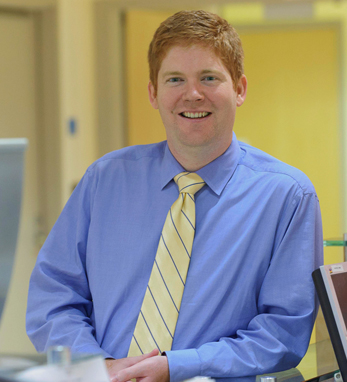
Kevin J. Curran
Three years ago, nine-year-old Ezzy Pineda was diagnosed with leukemia and began chemotherapy. Ninety-eight percent of adolescent patients respond positively to chemo, so her doctors at a Long Island hospital began the routine process. After four rounds, however, she was only getting worse.
Her parents were lucky enough to get her into a clinical trial at Memorial Sloan Kettering Cancer Center in Manhattan, where she first met Dr. Kevin Curran, a pediatric oncologist who specializes in the development of novel treatment approaches for leukemia and lymphoma that do not respond to current therapies. Specifically, he and his colleagues use genetic manipulation of immune cells to recognize and kill cancer cells.
“When you are diagnosed with cancer, people start reading on the internet and they would be like ‘Oh, success rate is so high,’ but truthfully, that doesn’t matter for the individual. We have to give them the chemo and see how they respond,” he told Irish America. “And hers didn’t respond, so she needed a different approach. We were able to give her that different approach and she has been cancer-free since.”
That approach is a budding treatment called CAR-T, which uses the body’s own immune system to fight the cancerous cells attacking it. The problem is that cancerous cells, though deadly, are effectively invisible to the body’s white blood cells, our natural defense mechanism against viruses and bacteria. What makes this treatment so unique, and experimental, is that Curran and others who are on the front lines actively remove billions of white blood cells, genetically modify them, and return them to the body so they can recognize the cancer when they encounter it. Curran likens it to giving the blind back their sight. “The cells, they want to find the cancer, they just forgot how to do it,” and blind cells can’t find and kill what they can’t see, so Curran is working on ways to genetically engineer white blood cells to learn how to see that cancer both exists, and is bad.
In the case of Pineda, it only took two weeks for her to be cancer free after her genetically modified white blood cells were returned to her body, and four weeks for her normal cells to return. He double-checked at six weeks to confirm. She has been in remission ever since.
This is an exceptional story to be sure, but more radical medical treatments have been developed based on less conclusive case studies (penicillin comes to mind). Curran’s job now is to determine what the success rate is of CAR-T for a larger pool of trial patients. He just closed a four year trial in March that treated 25 patients with a 75 percent success rate, and by the end of the year, several drug companies will have products on the market as the direct result of Curran’s research.
“We have now shown this proof of principle,” he says. “So now we need to figure out how to work it for five cancers, 10 cancers, 15 cancers, and not just for kids. We need to make it work for adults, too. We have to have them work better with less toxicity so that people don’t have to have three years of treatment or have a lot of side effects or have long-term side effects. That is our vision, our dream.”
Curran has been working towards this goal since high school, when he saw how talented and happy his pediatrician was, he says. He earned his M.D. at Georgetown University, where he decided to specialize in oncology. He did his residency at Tufts Floating Hospital and afterwards joined Sloan Kettering.
He grew up in Springfield, Massachusetts, the son of two Irish emigrants, both from Kerry, who met in Boston. His mother, Eileen O’Sullivan, is from Castleisland, and his father, Liam, is from Ballyferriter, where the Curran family farm remains today with many extended Irish relatives. It was there, in fact, where he proposed to his wife, Kathleen. Today they have two sons, three-year-old Liam, named after Kevin’s father, and 11-month-old Declan and still attend the Holyoke St. Patrick’s Day Parade every year.
“Education was definitely something that was instilled by my family and by my community,” he says. “My father worked for the gas company, so he worked driving front loader and literally digging holes and putting in gasoline, and he did that for thirty-five years and my mother was a homemaker. Sometimes my dad says, ‘How come you are not a regular doctor? What is all this research business?’ But that is the farmer in him… Like, ‘Why are you not doing a regular job? What are you doing?’”
